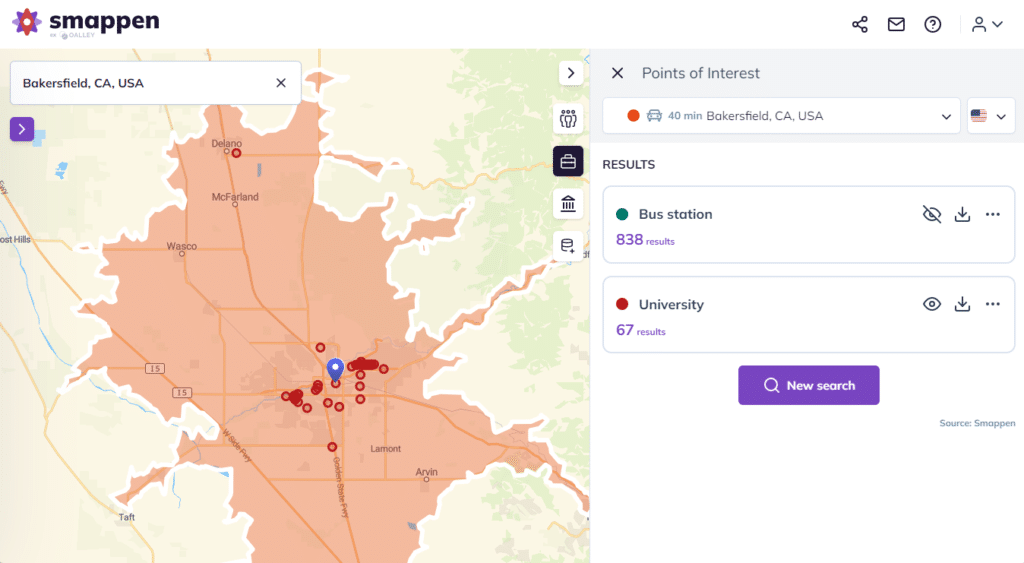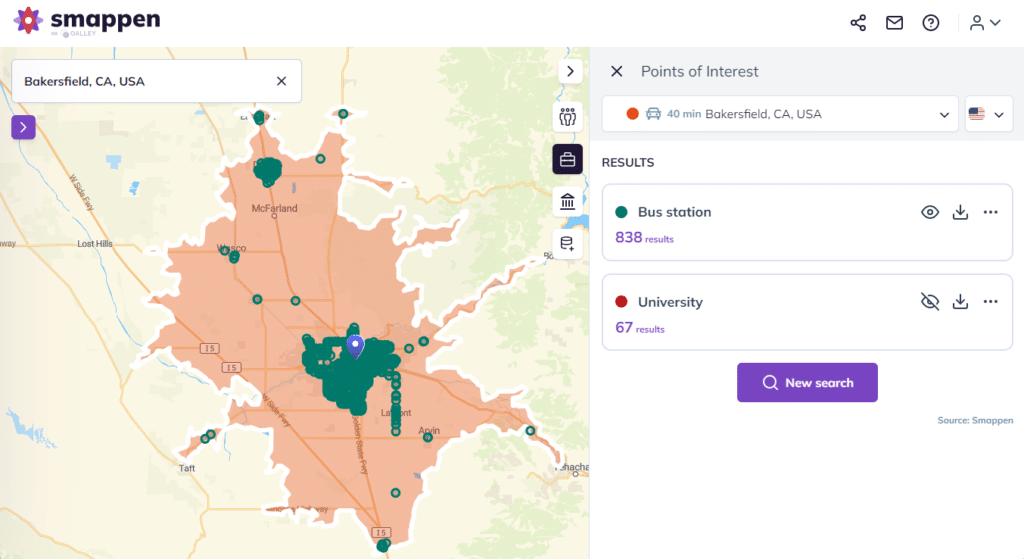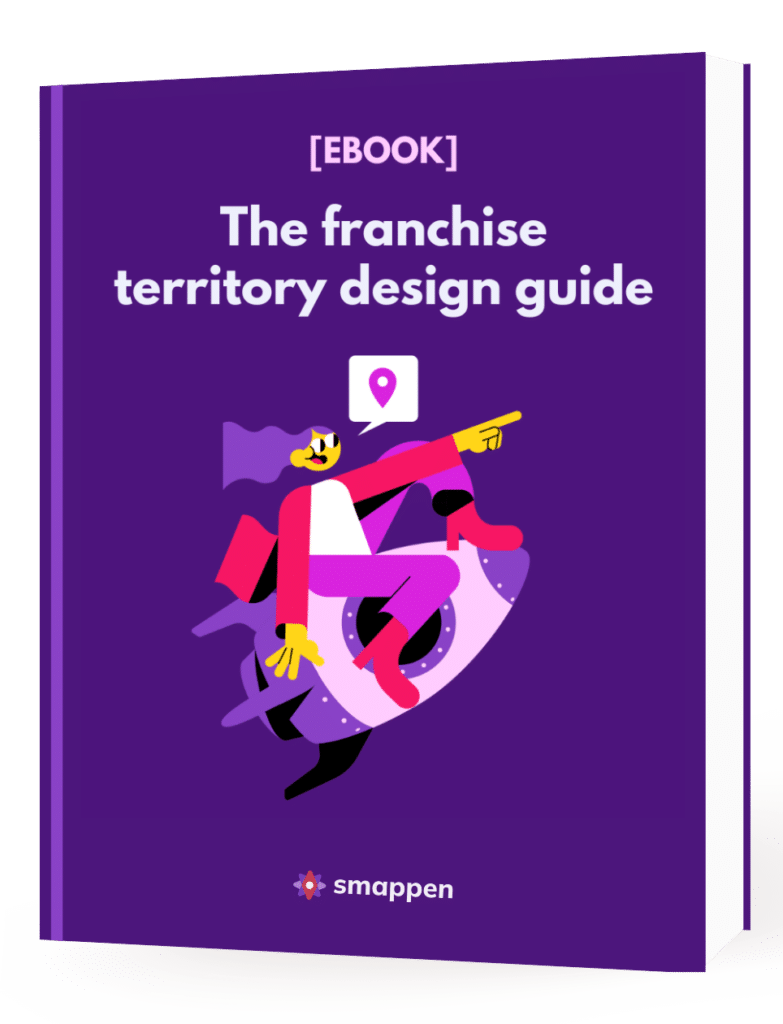Whether you’re moving or setting up shop for the first time, you need to know you’re picking the best spot. After all, the future of your business depends on it. Do you know all the factors that go into this decision? Sure, you need to make sure the rent’s low enough that your cash flow can more than cover it, but what else?
If you’re not sure, that’s where this guide comes in.
See what the perfect location for your business needs to be, well, perfect, and how you can find it with location intelligence.
5 things the perfect business location has
Finding the right location for your business is a bit more complicated than just browsing through real estate listings until you find a place that fits your budget. No matter the size of your business, you need to research the following elements to ensure you pick a location that will scale with you.
- Accessibility: How easy is it to reach your location? If you cater to customers who will drive to you, you’ll need ample parking and a location near major roadways. If your customers are primarily pedestrians or cyclists, you should be close to public transit.
- The right cost: While rent and similar costs shouldn’t be the only factors you consider when picking a new location, they’re still essential. Think of rent, utility costs, and any other overhead that comes with it.
- Competition: Surprisingly, having competitors around your business is a good thing. Think of mall food courts. Do you think the restaurants there would get more business if they relocated to a different spot in the mall? You just need to make sure you don’t have more competition than you can handle.
- Adequate resources: The term “resources” can mean a lot of things, depending on your industry. Researching resources for your location could mean looking up nearby suppliers if you’re in manufacturing or comparing emergency service response times if you run a high-risk business.
- The right customer: If your target customer isn’t anywhere near your location, it doesn’t matter how nice the building is or how cheap the rent is. Make sure you set up shop close to your ideal customer.
Now that you know what you’re looking for, here’s how you can research these factors in more detail.
How to research trade areas for potential locations
A trade area represents the locations you’ll be getting customers from. Businesses often define a primary trade area, which captures the vast majority of their business, a secondary area which has less, and a tertiary area which has almost none of their business.
So how can you research these areas?
With a location intelligence tool like Smappen, you can plug in the address for the building you want to research, pick how you’ll calculate your trade area, and go to town.

You can create isochrone maps (based on travel times) or isodistance maps (based on travel distances), using widely-available data to find the perfect measurements. For example, fast food restaurants have primary trade areas of 1-2 miles or 3-10 minutes in metropolitan areas.
How to analyze the population in a potential location

Once you already have a few locations in mind — and you’ve mapped out their potential trade areas — it’s time to find out if the market there can actually support your business. Not only do you have to make sure there’s a big enough customer base there, but you also have to make sure they’re the right fit for what you’re offering.
The depth of research you can perform here depends on the tools you’re using. If you’re looking up information in databases and comparing it to a tool like Google Maps, then you’ll only deal with surface-level data. You’ll have an idea of the general income level for a specific neighborhood and its approximate population, but unless you have weeks to spend crunching numbers, it’ll be tough to go beyond that.
With a location intelligence tool like Smappen, you can generate dynamic maps from built-in data that’s been collected and processed for you. After just a few minutes of drawing maps, you’ll have data visualizations you can use and share right away.
Finding your ideal customer with location intelligence
Finding your organization’s ideal customer profile goes one step beyond market research. You’ll be able to find customers that are cheap to acquire, cheap to keep, and bring in the most revenue for your business. You’ll usually start defining this profile by going through your customer data, extracting the most profitable customers, and grouping them into easily recognizable profiles.
But how does that help you find the right location for your business?
By comparing your ideal customer profiles with the population around the locations you’re researching, you can choose one with the best chance to pull in more of your ideal customers — instead of being marooned in a sea of people with no interest in your business.
You can do this with a location intelligence tool by uploading your customer data and comparing it to demographic information — which most of these tools come loaded with already.
Researching the competition
You know you need at least some competition near your business, since that’s a sign that your target market is there too. But how do you make sure you don’t have too much competition?
Even a simple, free tool like Google Maps will give you an idea of how many businesses like yours are in a specific area. From there, you can use public databases — if they’re public companies — or networking to gauge what size they are, the amount of business they bring in, and how much they’ll compete with you.
Point of interest (or POI) data is essential for doing this. Even Google Maps comes loaded with this kind of information, but a location intelligence tool will help get more detailed data — and combine it with trade areas — to really get the lay of the land.
Location, location, location
You could have the best product on the market, the best service in the industry, and years of experience, but that won’t matter if you don’t pick the correct location for your business. Wherever you decide to set up shop, it needs to be convenient to reach, the price needs to be right, and you need just enough competition to know you’re in the right market. Location intelligence gives you the tools you need to answer these questions. Start adding location intelligence to your research for free with Smappen.

